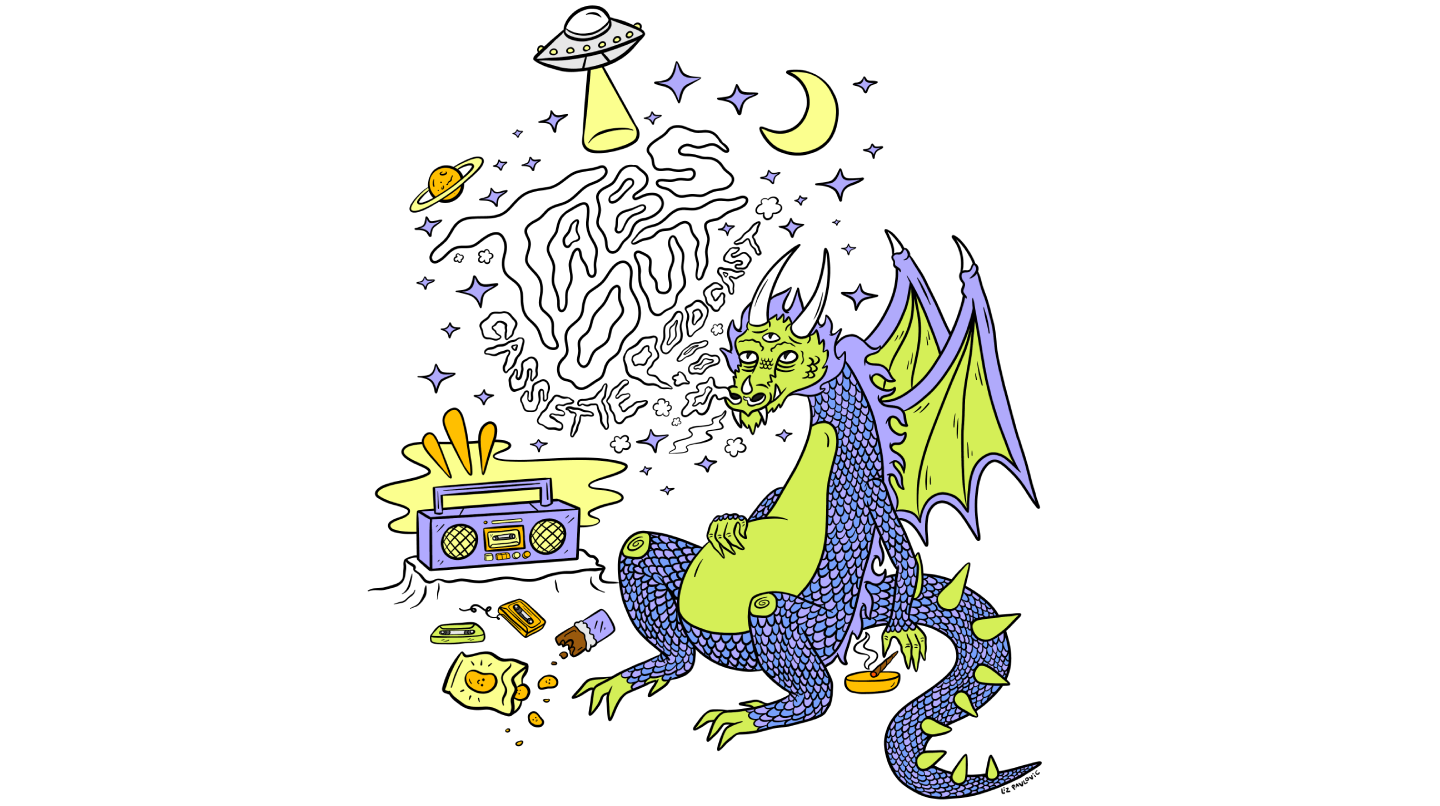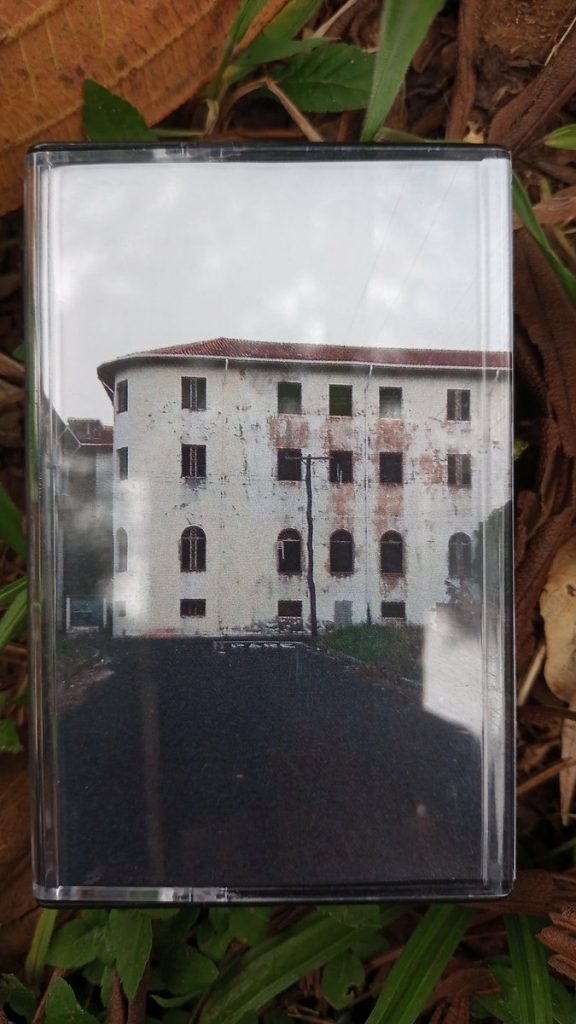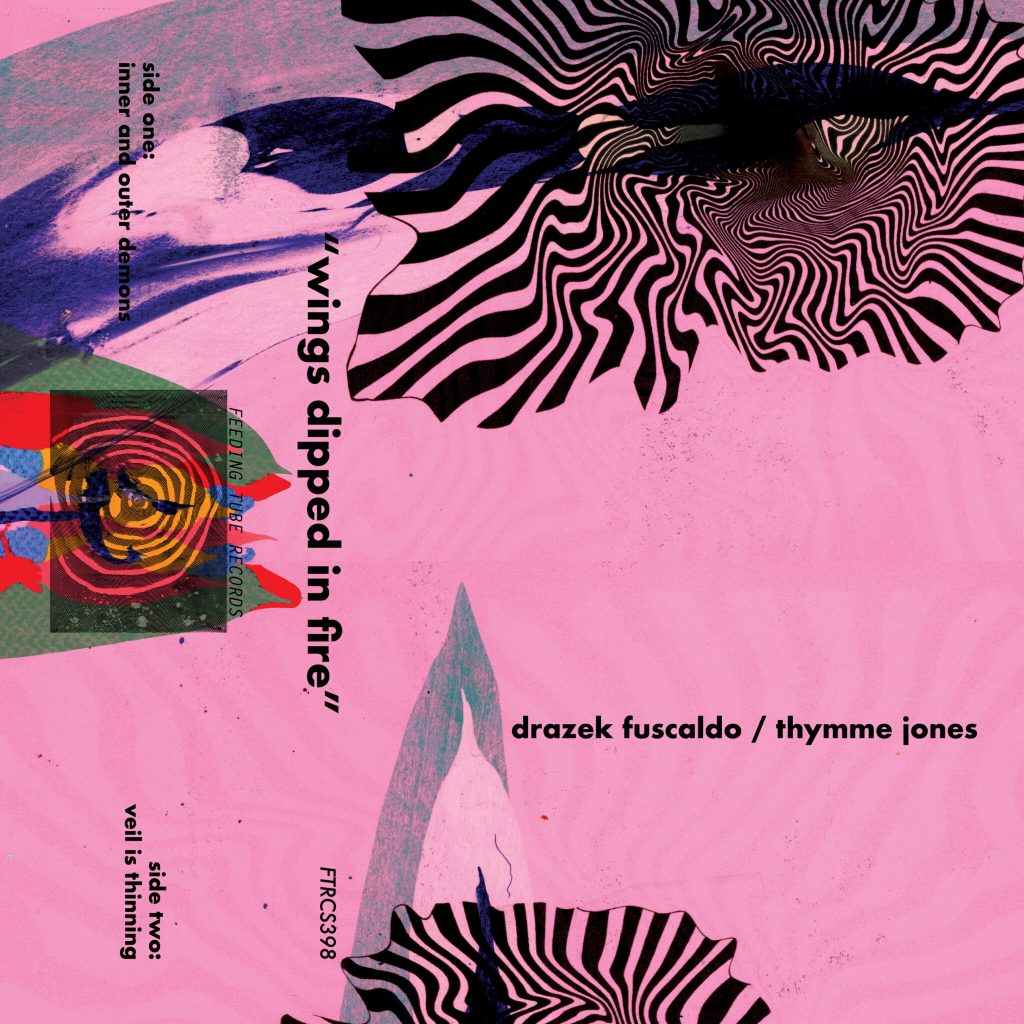Low End Activist – Airdrop
3.30.24 by Matty McPherson

There’s two ways you might want to try and grapple with a crash course in 90s rave/techno/”music you get sorted for Es and Whiz”. The first way is to become a crippling eBay slot machine addict waiting for a lot of techno tapes to emerge from the depths of one’s digital garage sale. They can show up and due to what I can only say is a lack of buyer imagination/desire to chase after these sounds, you can haul quite the lot for a 50 to 75 dollar bill if yr a smart cookie. You’ll end up with a lot of breadth, to say the least. Though what happens next is you end up hoarding tapes you forget to listen to (source: I got 30 of these I couldn’t even get myself to walk over and drop in the deck reading Raving over a couple dedicated sessions).
The second way is by making a wise move and studying the sonic roadmapping on Airdrop, the latest release from Low End Activist. The tape comes from Peak Oil, a vital dance LP oriented outpost, occasionally rearing its head towards the tape format when the time strikes (see 2022’s terrific euphoric sleight from Strategy). Brian Foote’s curation has always had an edge to it. After all he is a certified vet of a 90s midwest scene someone (other than Michaelangelo Matis) should write a book on. His work at Leech is tip-top in certain quips and hat-tips back to that time, but always quite of the current moment. It bounces back in the curation that chases after albums that both recall that time and place, while placing it distinctly in the now, crossed between full blown dance euphoria and full out electronic listening music. The 5am comedown of Strategy’s Unexplained Sky Burners; last year’s Purelink, a lost transmission from a dormant Black Dog Productions moniker that got trapped in the ether 25 years prior for being too ambient. Low End Activist meanwhile has come out with a smattering set of rave ghosts and pinpoints to happenings across England’s storied dance locales of the 90s. Another UR signal airdropped to yr aerials or the ferric.
It’s a nifty MO that gives Low End Activist real breadth and spine-chilling depth over the 41 minutes. The press release Foote sent indicates “the cuts take cues from key heroes of the “where were you in ‘92” set – Tango & DJ Ratty, Top Buzz, DJ SS, DJ Seduction, Dr. S Gachet – then fling them to the four corners”. Brief journeys to their discogs only made it abundantly clear how little of their sound was being imported to America via Profile or Sonic Records rave comps that have ended up in my bedroom. Would Low End Activist have fit snuggly on one of those comps of the era? Truthfully, he’d have stood in opposition there; perhaps finding a home somewhere snuggly on the Psycoustic Dillusion Conception 1. A killer 1993 comp from the UK that sees the continuum on the precipice of jungle but not quite ready to trade the airhorns for the bpms, the dub influence brimming all over.
Dub truly is the most important element to Low End Activist’s cuts on display. This is not paced like a set, but the dub process is stiff glue (I would reckon he’s got the Soul Jazz Box of Dub), precisely the thing that takes these cuts out of the past and into a 2024 deconstruction. These subtractions and echoes flows in and out without ever calling attention to itself. There’s a malleable feeling that results, the kind scratching an itch that doesn’t dissipate after you realize how well Airdrop nails its lockstep between 150 bpm mania and a softer, synthetic rave-psychosis. That kind of entanglement defines the C41 and its seamless directions to sprout from, enacting its own splatters of k-time. Every cut’s subtitle that indicates place in a way, sometimes the particular density of the room, the bpms, or some inbetween character of madness in the present trying to put yourself there. The title itself already implies a beam in.
The opening ten minutes, Waterstock and Yarnton Rd 2 Cassington, are reflections of space building in its ambient form. They leave in the synths, or a stray drum rhythm stay in; it’s close enough to feel the ghost or the pulse of the room, but at that eerie distance Strategy was catching on Fountain of Youth. Mayhem on Barton Hill brings out the ravier end of dub dimensions. There’s two types synths: dead-eye dubby synth strobes and even an airy footwork bridge, amongst layers of quixotic breakbeats and chase-laden vocal euphoria n’ airhorns skitters that leaves you shadowbox juking. Squeeze Your Lemon explores mix dynamics with vocals and a breakbeat cutting right in your face, but often hiding behind the fog of those airhorns or a radio-jammed vocal wub leaving you gobsmacked.
White Horse Hill is almost seamless transition, as much as a rhythm shift. Choppier on the dnb breaks to create a different syncopation. It tumbles down off that hill with another airy synth dive. Praha Hardcore is not entirely in jest, leaving a clear hardcore synth rhythm with meager percussive oomph and lotsa atmosphere. It’s just hefty bass bopping and weaving into a clear catalyst zone. Tango Skit is such the catalyst, itself the most rollicking, with an ample 150 BPM pleasure dome kickboxing to sprout. Hinksey Hardcore is a far more liquid outing than its Praha sibling, synths surfing under alien noise and machine clanking straight into a lost Rez boss battle. That trio leading up to the finale might be the true sleight of the tape, although I err towards the Cortina Outro as my favorite. After all, it is the most outright “dub rave”, laid back on its vocal sample imploring movement, yet ever building in its focused burst of intensity. It feels sinister and less an invitation to listen in than to truly get moving. That’s about all I’ve been capable of doing for the last 40 odd minutes, skittering into a rhythmic pulse.
Tape Sold Out at Peak Oil…check out distros and retailers.












